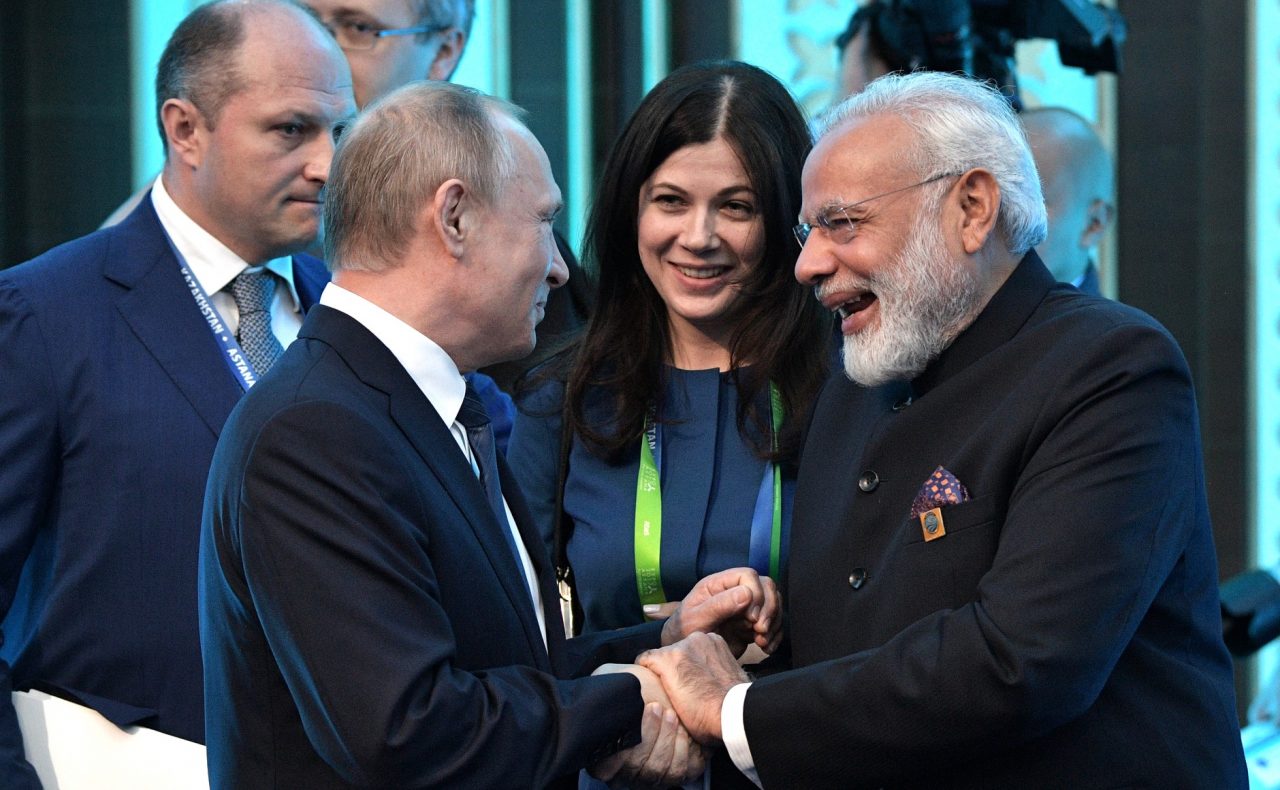In another historic first in the Indo-Russian relationship and a possible snub to the US, a shipment of Russian coal arrived in India through Iran via an all-new corridor.
Polar Research Vessel: China ‘Races Ahead’ With 4th Icebreaker ‘Ji Di’; India Bets On Russia For Joint Venture
Russia’s national railway company announced that the country has shipped two coal-laden trains to India via the International North-South Transport Corridor (INSTC), which passes through Iran.
Russian Railways said on its Telegram channel, “For the first time, two trains with Kuzbass coal headed to India along the International North-South Transport Corridor. The trains set off from the Kemerovo region. They followed along the eastern branch of the INSTC through Kazakhstan and Turkmenistan to the Iranian port of Bandar Abbas.”
The INSTC is a multimodal route that connects St. Petersburg to the port of Mumbai in India across 7,200 kilometers (4,500 miles) and comprises a railway, road network, and seaports. The corridor is part of Russia’s effort to establish new transportation routes in response to Western sanctions, which have compelled Moscow to reroute goods from Europe to the Middle East and Asia.
Initially known as the NSTC project, the agreement was signed by Russia, Iran, and India in 2002, making them the founding members. The corridor’s construction got a further push owing to the limitations imposed on Russia. Additionally, New Delhi has promoted the corridor as a substitute for China’s Belt and Road Initiative.
🇷🇺🇮🇳 North-South Corridor History Made – Trains Head to India with Coal For First Time
Travelling from Kuzbass to India, two trains have embarked on a journey using the North-South International Transport Corridor (ITC), Russian Railways confirmed.
The journey began in Siberia… pic.twitter.com/67vhSaAOjl
— RT_India (@RT_India_news) June 25, 2024
According to the statement, the coal would be transported by sea along the last portion of the route from the port of Bandar Abbas in Iran to the port of Mumbai in India.
India is one of the few countries that has dismissed all calls to impose sanctions on Russia and has increased its energy exports from Moscow in the wake of Russia’s invasion of Ukraine. India has been buying more thermal coal and coking from Russia since Moscow diverted exports from EU nations and gave significant discounts to Asian consumers.
Moreover, India is still mostly dependent on coal for electricity production despite its efforts to increase the number of renewable energy initiatives. According to Russian Railways, shipping by the INSTC from Russia to India takes about 23 days, which is much less time than shipping via the Suez Canal, which can take up to 45 days.
Earlier, Russian President Vladimir Putin stated that Moscow is aiming to establish regular freight shipping lines and guarantee interconnectivity across the INSTC. Over the next seven years, the quantity of products shipped via the INSTC is anticipated to nearly triple. The Russian leader has proposed a logistics hub for the corridor along the African coast.
That said, the recent coal delivery comes days after India indicated it was planning to import coking coal from Russia and other Central Asian countries via Iran’s Chahabar Port. Currently, coal from Russia comes to India via the Red Sea route. Previous reports suggested that the movement would likely begin in the Financial Year 2025.
Notably, the shipment delivery comes when a new study found that Indian imports of Russian coal have declined.
India’s Declining Stocks Of Russian Coal
According to data from coal consultant Bigmint, during the three months ending in May, Indian imports of Russian coal decreased while US shipments saw an uptick. This was attributed by traders to Russian supplies becoming less competitive.
Bigmint’s data indicated that Russia’s total coal exports to India during that time decreased by 22.4% compared to the same period last year, reaching 6.76 million metric tons. Over the same period, the US exports increased 14.4% to 6.68 million tons.
An annual 67% drop in thermal coal shipments— mostly used for electricity generation—was the primary cause of India’s reduction in Russian coal imports. The Bigmint data indicated a rise in purchases of steelmaking grades, including anthracite, coking coal, and pulverized coal injection (PCI) coal, over the period.

Following new Western sanctions on Russia after the Ukraine war, India has become Russia’s second-largest coal market after China. The report noted that amid a decline in worldwide prices, purchasers said thermal coal from Russia was less appealing without smaller discounts.
Russian coal supply to China saw a record uptick due to reduced exports to India. However, in the three months that concluded on May 31, US thermal coal shipments to India increased by 21.6% over the same period last year to 4.57 million tons, accounting for 9.2% of Indian imports. Its percentage of India’s imports of coking coal, however, decreased from 16% to 13.5%.
According to Bigmint data, Russia’s share of India’s seaborne market for steelmaking feed increased by 44% year over year to 13.9% coking coal imports, but its portion of India’s thermal coal imports decreased to 3.2% from 8.8%. Russia, nonetheless, remained the primary supplier of nearly all of India’s imports of other steelmaking grades, including PCI and anthracite.
- Contact the author at sakshi.tiwari9555 (at) gmail.com
- Follow EurAsian Times on Google News




